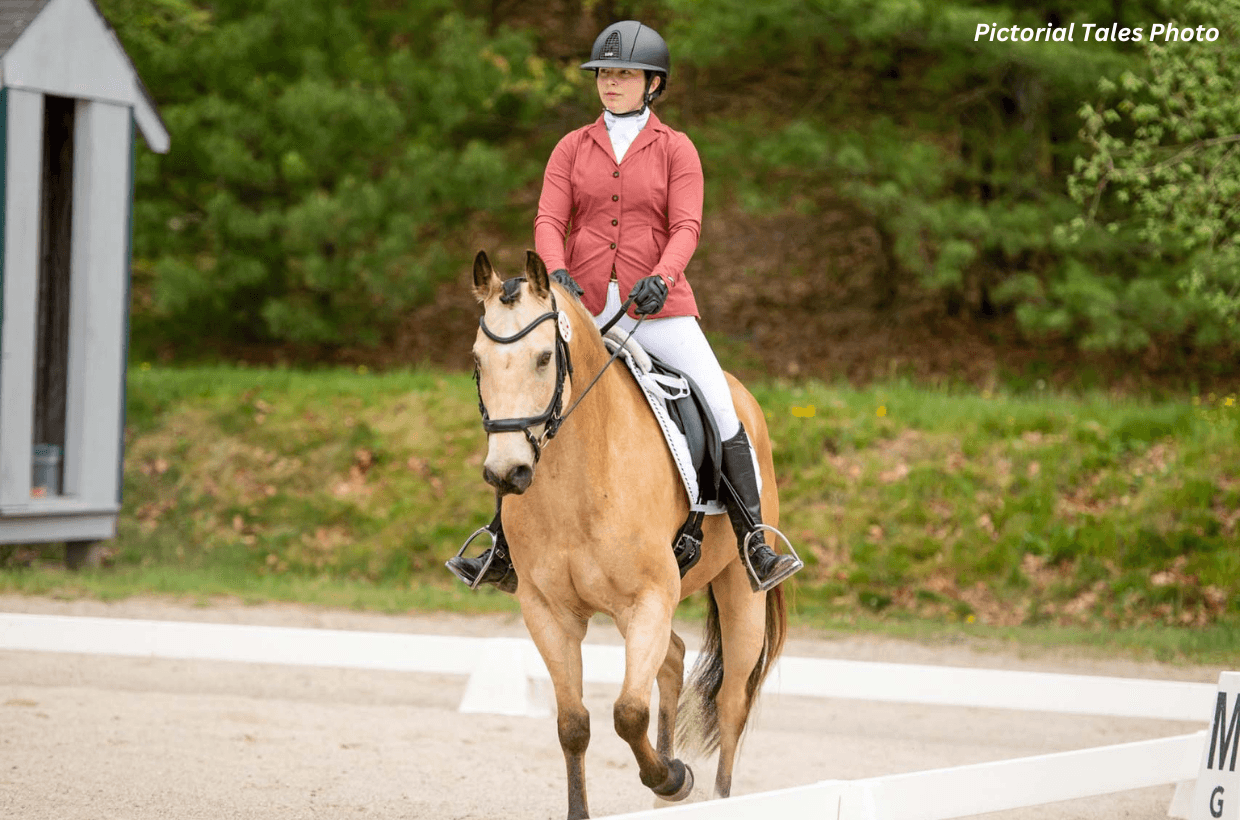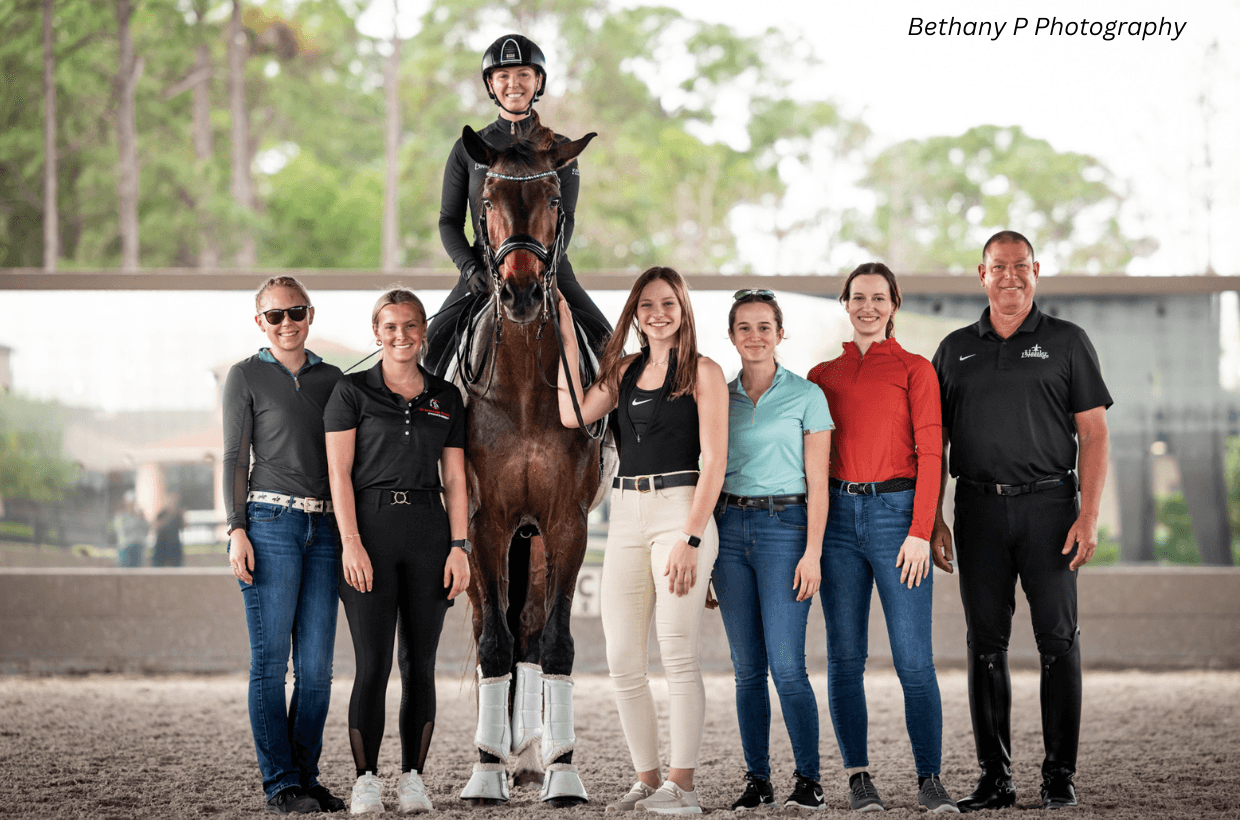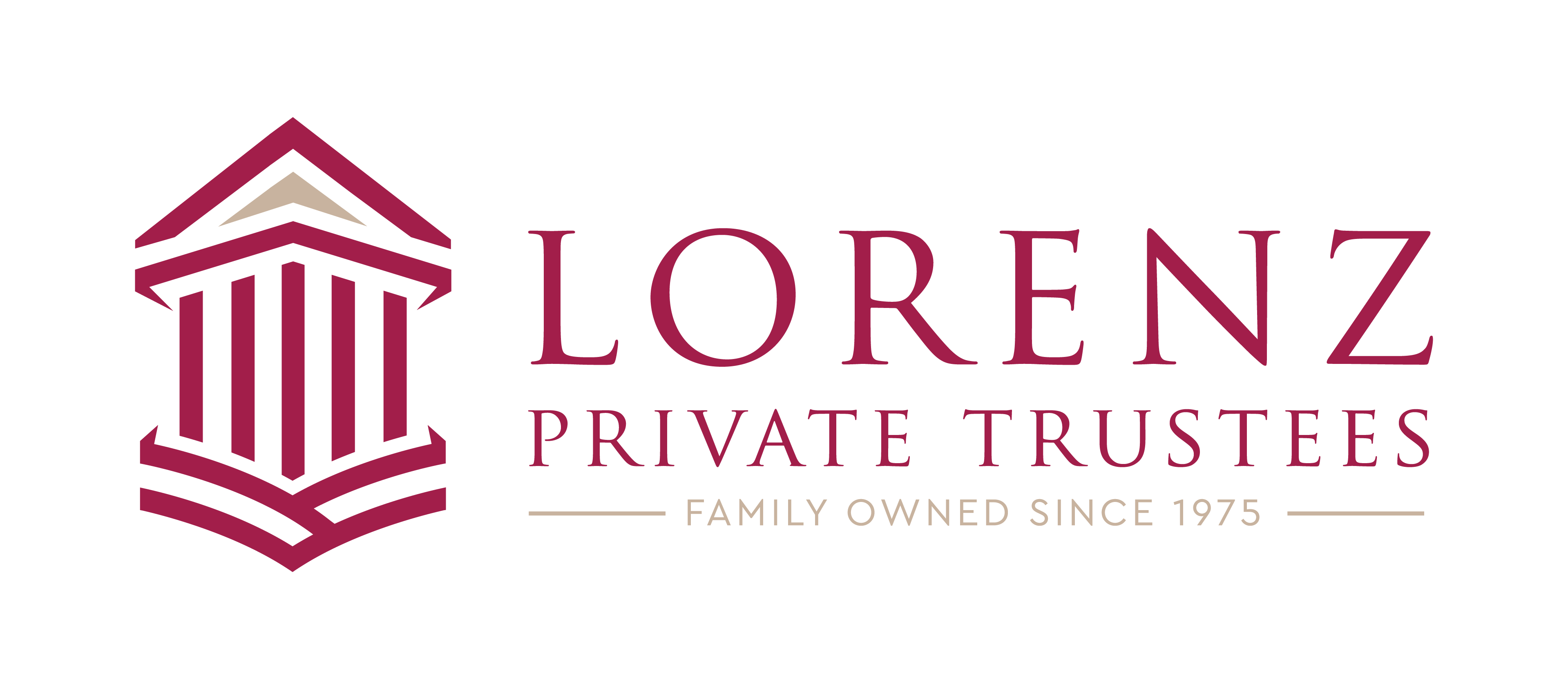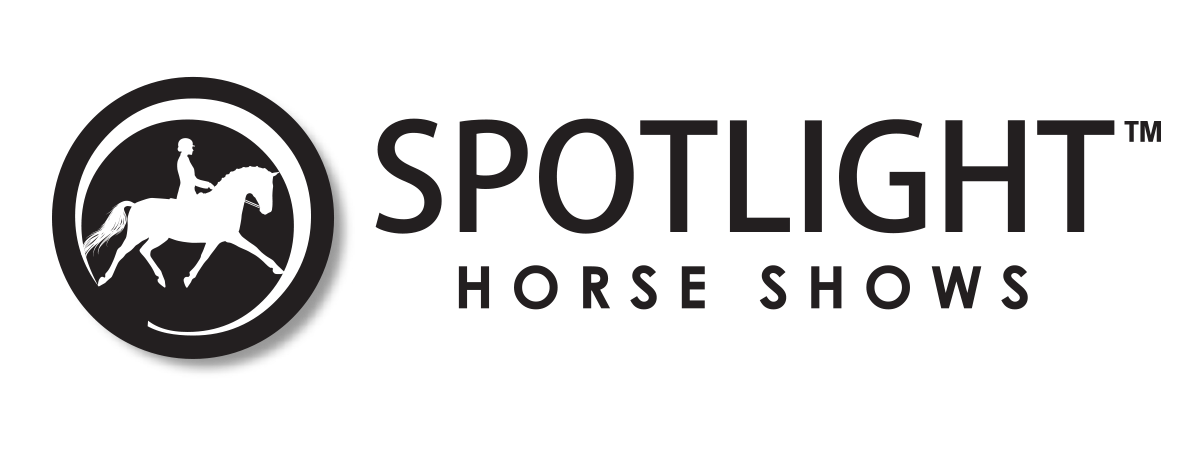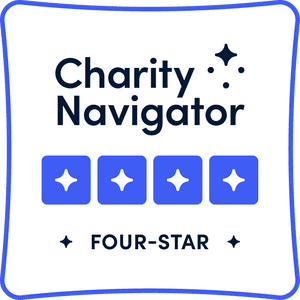Laurie Daniel (Region 7)
2015 Gifted Recipient

Photo Credit to Alan Jarvis Photography
First and foremost, I want to thank the Dressage Foundation and Carol Lavell for granting me the 2015 Gifted Memorial Fund for Adult Amateurs. The Dressage Foundation has been extremely gracious and patient, as my situation changed dramatically from the time I applied for the grant to the time the grant was awarded.
What started out to be an intensive week of training with my seven-year-old mare turned into a week of rehabilitation. Shortly after being awarded the Gifted Memorial Fund for Adult Amateurs I was diagnosed with a bulged disc. I tried several treatments to relieve the pain, but ultimately had to stop riding. Almost to the point of giving up, I underwent two spine surgeries at the Laser Spine Institute in Arizona.
After recovery from surgery, I spent 8 weeks at the walk, then slowly increased until I could do the basics of walk, trot and canter again. Remarkably, the pain that I experienced doing normal tasks actually subsided while in the saddle. With this in mind, my trainer, Julie Jones Thomas, and I decided this would be the time to use the week of training and bring me back to full riding function.
I’ve been a client of Julie’s for 20 years. Doing a week intensive should be an easy thing, but actually it took real planning to ensure our time together would be well spent. Julie carefully planned out activities creating a structure around Beth Baumert’s book, “When Two Spines Align: Dressage Dynamics.” She gave me a section of the book to read before we started. This was so insightful. After a long history together, we had a new hurdle to get through. We needed a new perspective, a new approach, and a new vocabulary.
The first day, Julie asked me to make a list of the skills that I came to the table with. She knew I needed to clear out a lot of negative talk in my head. Rather than focus on my physical limitations, I needed to focus on my skill set. I made a list of my physical, mental, and experiential skills. These were the things we drew from throughout the week, combined with our lessons from the book.
Julie also had me ride her school master, Devil Dancer, as his cat like walk and comfortable gaits would be less taxing on my body. Each day we would read, ride, video and review. We developed new perspectives, new approaches and expanded our training vocabulary.
Each day I rode Devil at least once. Julie put me on as many other horses as possible during our training week, even if just for a few moments. We used these as opportunities to test my skill set. From Training Level horses to Grand Prix, could I get on and have an effect? Could I feel what the horse needed and help the horse get better? Better gait, better bend, better connection? We also used it to test what types of horses I can comfortably ride. We did some lunge lessons to just let me focus on me. I took Devil for a few hacks down the road. We spent time looking at videos of my lessons and analyzing position.
It was not easy. I struggled some days, but ultimately it was the best week of riding I’ve experienced in many years. I came back to full riding and even advanced my skills. Each day was different, and sometimes I got frustrated with myself. But, the week was invaluable to me at this point. I learned so much. Here were my big “ah-ha!” moments:
- I have to keep riding. Every day got better and better, and my body responded well.
- I have the tools- Classical Dressage training works! I have little experience doing flying changes, however, I’ve been properly trained to ride; in balance, using my seat and legs. At the end of the week I rode a line of five clean three-tempi changes, and four two-tempis on Devil Dancer.
- Ride the exercise for what you get AFTER the exercise. Don’t just ride an exercise to get through it and sigh with relief that you did it. Ride the exercise to see what you get after the exercise. The exercise itself may have gone horribly wrong, but did it improve the gait? Thoroughness? Contact? I was still riding to get through the exercise, not thinking about the outcome. This has given me a whole new perspective.
- Ride with intent. This will be a key for me. When I rode with intent, I was clear on what I wanted and was less fatigued. It’s far less taxing on the body. I will need to ride from a more mental place than physical place at this point.
- Change the modality when the physical body can’t handle it. I have to be able to push my body to some degree, but there is a point that I have to be able to say, this isn’t working – I need to approach this a different way. This takes a trainer who understands the rider’s physical issues, and also trusts that the rider is trying her best to make it work.
I plan to continue to work with Julie using Devil for a little while longer. When I’m physically ready, we’ll transfer all we’ve learned to my mare. I have hope that she and I can continue working together, but it may turn out that I need a schoolmaster myself. We’ll make that decision when the time comes. Meanwhile I’m so grateful to have been able to have the opportunity to immerse myself for a week, regain my confidence, and make riding my goal in life again.
Julie’s ability to have a creative approach was key to our success. I can't thank her enough for her time and devotion. Nor can I thank The Dressage Foundation, Carol Lavell, and staff members Jenny Johnson and Jane Fucinaro, for being so helpful and supportive.
My Sincerest Thanks,
Laurie Daniel
P.S. Julie has a signed copy of Beth’s book and did not know that Beth is the President & CEO of The Dressage Foundation when she selected the book to work with. What a happy coincidence.

